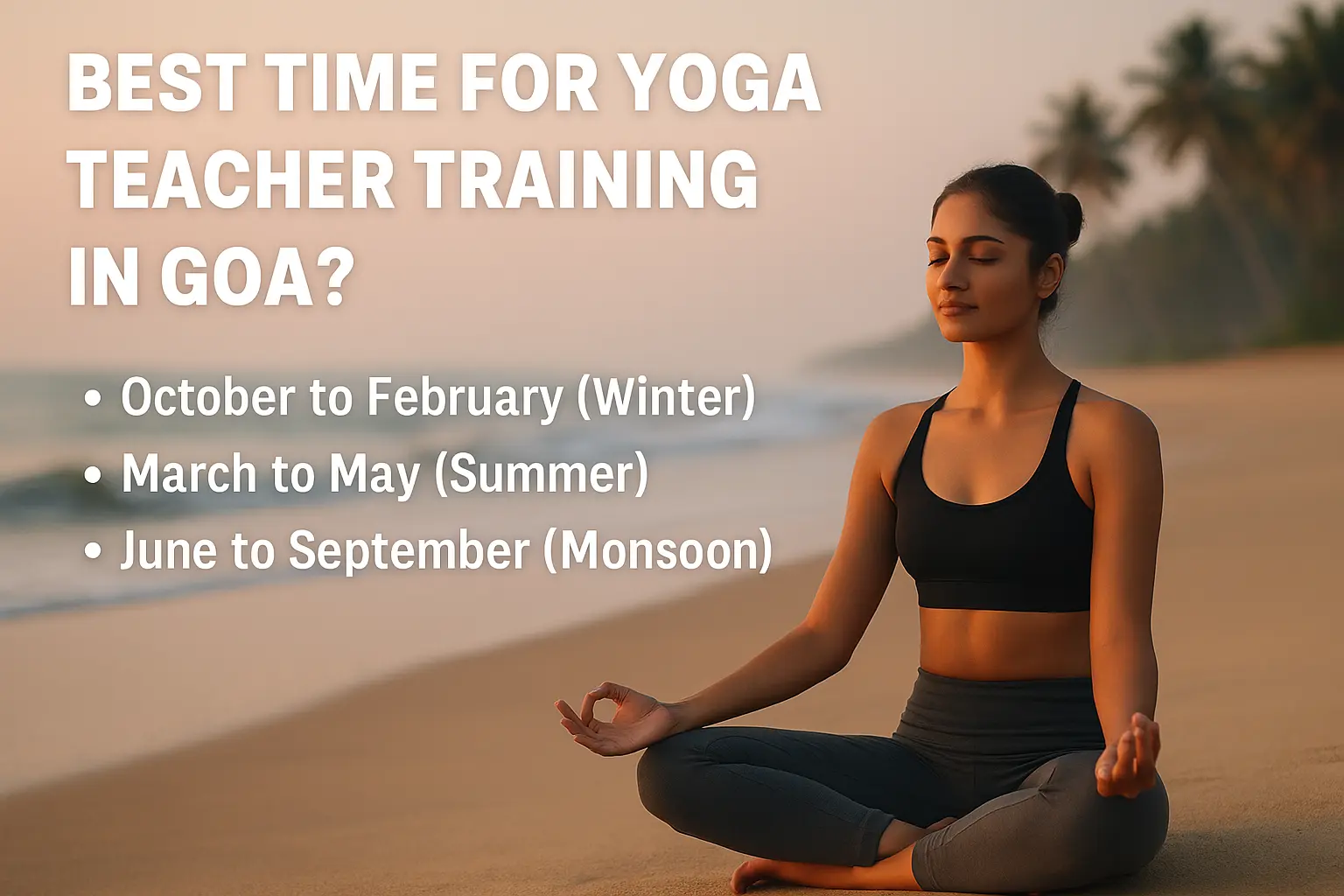
TL;DR: The best time for Yoga Teacher Training in Goa is October to February (winter). It offers pleasant weather, outdoor-friendly conditions, and active yoga schools. Summer (March–May) and Monsoon (June–September) are also viable for quieter or budget-friendly experiences.
Check out our friendly guide to yoga in Goa to decide if a retreat or YTT is right for you
| Season | Months | Highlights | Best For |
|---|---|---|---|
| Winter | October – February | Cool, dry, and sunny; perfect for outdoor yoga and beach sessions; most schools active. | Beginners, international students, full YTT courses. |
| Summer | March – May | Hot and humid; quieter; discounted stays and training; early morning practice advised. | Budget travelers, smaller group learning. |
| Monsoon | June – September | Rainy, lush green Goa; peaceful energy; limited schools open; introspective practice time. | Spiritual seekers, meditation lovers, off-season retreats. |
Let’s examine how each season correlates to your yoga practice in Goa.
All throughout the winter season is when Goa is at its finest for yoga teacher training. The days are still sunny, but the temperatures are much more manageable, and the evenings remain cooler. There is little to no rainfall, which is ideal for outdoor yoga, sunbathing, and shopping at local markets.
What you should pack: Avoid set in heavy fabric and pack sunscreen and hats; as well as layers for evening temperatures. Commonly available must be made as soon as possible.
Goa’s summer season is defined between the months of March and May and arguably the warmest and gentlest period of the year.
Yoga in Goa during the summer period, is it worth it? One of the main yoga practices is offered in the style of sun salutation and is delivered in the morning before the sun reaches its peak along with the other practices and rituals.
The hot air and pool of humidity during this period is described as those with far less visitors.
Top Tips: Ensure you drink copious amounts of water, especially to avoid heat strokes while exercising during extreme temperatures.
Goa is a lovely tropical paradise during monsoon season. The thick carpets of raining green thrive and the torrential rains generally mean certain classes of yoga are done indoors and life slows down. If you love the peace and tranquility of torrential rains and nature then Goa in the monsoon has a uniqueness. Prepare for limited options and showers that last the entire day.
Top Tips: Remember to take rainwear and fabrics that dry quickly, along with a good book or a journal for the days of rain.
The ideal time for yoga teacher training in Goa is for most yogis between the months of October and February, which is winter. The perfect balance of reasonable weather, open yoga schools, warm energy, and inspiration comes during this time.
However, every Goa yoga season has a special quality to them:
Regardless of the timing, yoga teacher training in Goa, is guaranteed to be transformative for life. Every season has a unique approach to offer in terms of yoga, the world, and self.
November to February offers the most balanced weather — warm days, cool nights, and vibrant yoga schools operating in full swing.
Yes, but only if you enjoy calm, introspective practice. Many schools operate smaller groups or private retreats during this period.
Absolutely. March to May is off-peak, so you can find discounts on YTT packages and accommodations while enjoying quieter beaches.
Some do, especially near the beach. However, well-established centers like Divine Path Retreat continue with flexible or indoor sessions all year round.
Yes! Many international students prefer off-season months for smaller batch sizes and personalized training.
If you’re planning your next certification, check out our upcoming 200 Hour Yoga Teacher Training in Goa for monthly start dates and seasonal offers.